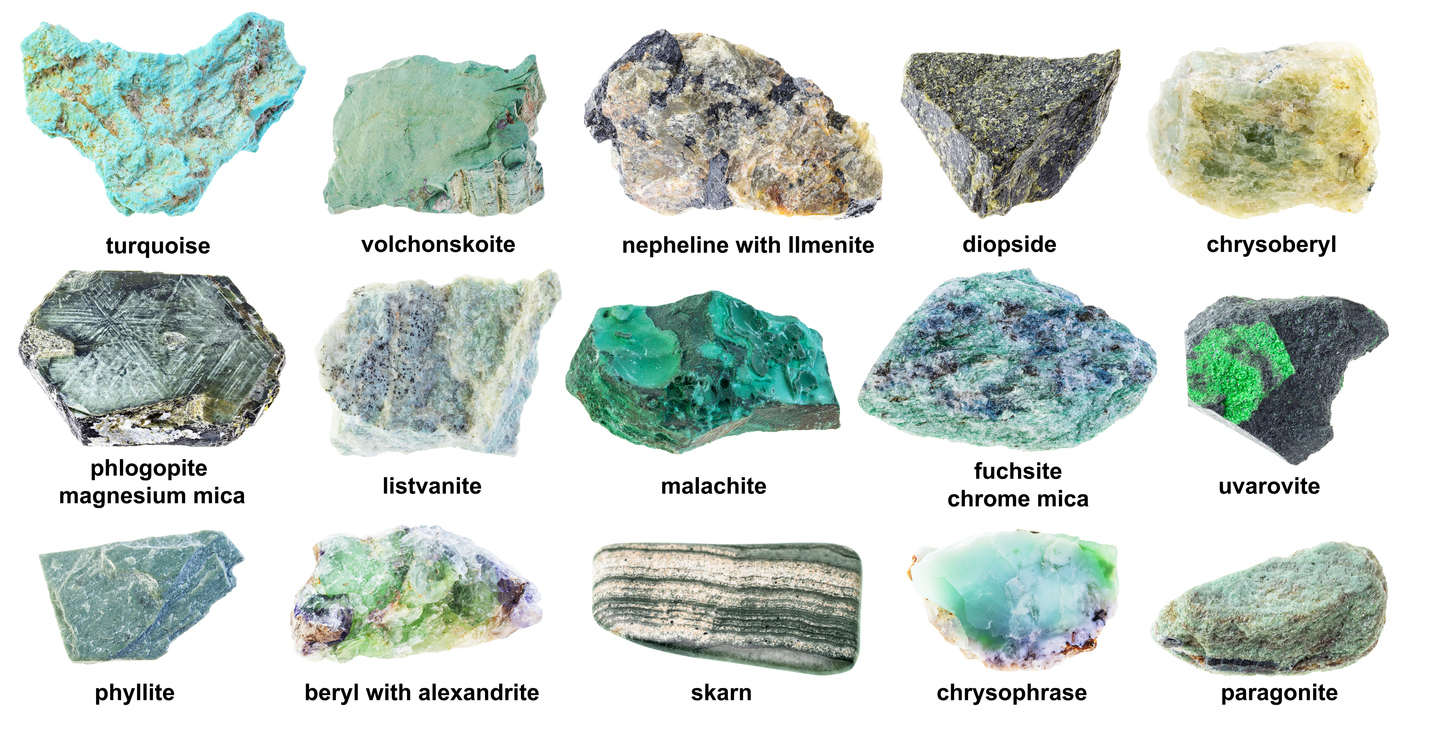Unearthing Nigeria’s Hidden Gems: A Guide to Buying Phlogopite, Hematite, and Magnetite
Unearthing Nigeria’s Hidden Gems: A Guide to Buying Phlogopite, Hematite, and Magnetite
Are you a fan of rare and exquisite gemstones? Have you ever wondered about the hidden treasures that lie within Nigeria’s rich geological landscape? Look no further! In this captivating blog post, we will take you on an exciting journey through the depths of Nigeria’s mineral wealth, unearthing the stunning phlogopite, hematite, and magnetite. Get ready to dive into a world filled with shimmering beauty and discover everything you need to know about buying these extraordinary gems. Join us as we embark on an adventure to unveil Nigeria’s best-kept secrets in the realm of precious minerals!
Introduction to Nigeria’s Hidden Gems
Introduction to Nigeria’s Hidden Gems
Nigeria, known for its vibrant culture, diverse landscapes, and rich history, is also home to a variety of hidden gems that are waiting to be discovered. These gems, including phlogopite, hematite, and magnetite, have been overlooked by many but hold immense value and potential.
Phlogopite is a mineral that belongs to the mica family and is found in abundance in Nigeria. This gemstone has a unique golden-brown color with shimmering layers that make it stand out from other minerals. Phlogopite is mainly mined in the central part of Nigeria in states such as Bauchi, Cross River, Plateau, and Kaduna.
Hematite is another beautiful gemstone found in Nigeria. It is an iron oxide mineral that comes in shades of reds and browns. Hematite has been used for centuries as a healing stone due to its high iron content. In Nigeria, this mineral can be found primarily in the northeastern state of Borno.
Magnetite is yet another precious gemstone hidden away in Nigeria’s vast lands. It is an iron oxide mineral with a metallic luster and black color. Magnetite holds significant economic importance as it contains high levels of iron ore which makes it a valuable resource for industries such as steel production. This gemstone can be found in large deposits across various states like Kogi, Enugu, Kwara, Nasarawa among others.
What is Phlogopite, Hematite, and Magnetite?
Phlogopite, hematite, and magnetite are three unique minerals that hold immense value in the world of gemstones. Each one has its own distinct characteristics and properties that make it highly sought after by collectors and jewelry enthusiasts alike. In this section, we will delve deeper into the origins, composition, and uses of these fascinating minerals.
Phlogopite is a member of the mica family and is known for its distinctive golden-brown color. It was first discovered in Nigeria in 1900 in the Jos Plateau region and has since become one of the country’s most prized gemstones. Its name is derived from the Greek word “phlogopos,” which means “fire-eyed,” due to its reflective quality when viewed under light. Phlogopite is composed of magnesium, aluminum, potassium, iron, fluorine, and hydroxyl ions. It occurs as thin sheets or flakes that can easily be split into thinner layers, making it an ideal material for use in electronics such as cell phones and computers.
Hematite is another mineral that holds great significance in Nigeria’s gemstone industry. It is a dark red or black-colored oxide mineral with a metallic luster. Hematite derives its name from the Greek word “haima,” which translates to blood due to its deep red coloration when powdered.
History and Cultural Significance of These Minerals in Nigeria
History and Cultural Significance of These Minerals in Nigeria
Nigeria is a country rich in natural resources, including various minerals that hold immense cultural and historical significance. In this section, we will explore the history and cultural importance of three specific minerals found in Nigeria – Phlogopite, Hematite, and Magnetite.
Phlogopite is a type of mica mineral that has been mined in Nigeria for centuries. It was first discovered in the Plateau State region of central Nigeria by British geologist Albert Ernest Kitson in 1904. However, it wasn’t until the 1950s that commercial mining of Phlogopite began on a large scale.
The name “phlogopite” comes from the Greek word “phlogos”, meaning fire, due to its ability to withstand high temperatures without melting or losing its color. This unique characteristic made it highly sought after for use as insulation material in various industries such as electrical wiring and construction.
Apart from its practical uses, Phlogopite also holds significant cultural value among certain Nigerian communities. For instance, the Yoruba people believe that wearing jewelry made from this mineral can bring good luck and ward off evil spirits. In fact, phlogopite beads have been found buried with ancient African kings as they believed it would protect them on their journey to the afterlife.
Where to Find and Buy Authentic Phlogopite, Hematite, and Magnetite in Nigeria
When it comes to purchasing authentic Phlogopite, Hematite, and Magnetite in Nigeria, there are various options available. These minerals can be found all over the country, from local markets to specialized stores. Here are some of the best places to look for and buy these precious gems:
1. Local Markets:
One of the most common places to find and buy Phlogopite, Hematite, and Magnetite in Nigeria is at local markets. These markets offer a wide range of products, including rare minerals like Phlogopite, Hematite, and Magnetite. The advantage of buying from local markets is that you have the opportunity to directly interact with the sellers and inspect the authenticity of the product.
Some popular local markets where you can find these minerals include Keffi Market in Nasarawa State, Garki Market in Abuja, Ogbete Main Market in Enugu State, and Kasuwan Shanu Market in Kaduna State.
2. Mineral Shops:
For a more specialized shopping experience, you can visit mineral shops or gemstone stores that specifically deal with rare minerals like Phlogopite, Hematite, and Magnetite. These shops often source their products directly from mines or reliable suppliers who provide authentic minerals.
Some well-known mineral shops include Lagos Gemstones Gallery located at Lekki Phase 1 in Lagos State and Jos Museum -Geology Department Shop located at Plateau Road Jos Plateau State.
Tips for Identifying High-Quality Minerals
When it comes to purchasing minerals, it can be challenging to determine the quality of the product. With so many options available in the market, it is essential to have a good understanding of what makes a mineral high-quality. In this section, we will discuss some tips for identifying high-quality minerals when buying Phlogopite, Hematite, and Magnetite in Nigeria.
1. Research about the Mineral: Before making any purchase, it is crucial to do your research about the specific mineral you are interested in buying. Understand its characteristics, properties, and how it should look like in its natural form. This will give you a better idea of what to expect and help you identify any red flags when examining the mineral.
2. Color: One of the first things to consider when looking for high-quality minerals is their color. The color should be vibrant and consistent throughout the specimen. Avoid minerals that have dull or faded colors as they may indicate impurities or low-grade material.
3. Transparency: Transparency refers to how much light can pass through a mineral sample. High-quality minerals are usually transparent or translucent, meaning they allow light to pass through them partially or fully without losing their color intensity.
4. Shape and Form: Another aspect to consider is the shape and form of a mineral specimen. High-quality minerals are often found in well-defined crystal shapes with smooth surfaces and sharp edges. If you notice any irregularities or rough surfaces on a sample, it could indicate poor quality.
Benefits of Owning These Minerals from Nigeria
Nigeria is a country blessed with an abundance of natural resources, including various minerals that are highly sought after in the global market. Among these minerals are phlogopite, hematite, and magnetite – three valuable gems that have a wide range of applications in different industries. In this section, we will discuss the benefits of owning these minerals from Nigeria and why they should be on your radar as potential investments.
1. Economic Growth and Diversification
Owning these minerals from Nigeria can have a significant impact on the country’s economy by contributing to its growth and diversification. With their high demand in various industries such as construction, manufacturing, and electronics, the production and export of these minerals can generate substantial revenue for the country. This revenue can then be used for infrastructure development, job creation, and other essential sectors, leading to economic growth and diversification.
2. Versatility
One of the main benefits of owning phlogopite, hematite, or magnetite is their versatility in terms of usage. Phlogopite is primarily used in the electrical industry due to its excellent insulating properties; it is also used as a flame retardant material in various products such as paints and plastics. Hematite is commonly used as an iron ore due to its high iron content and is also utilized in making jewelry due to its striking metallic luster. Magnetite has strong magnetic properties which make it useful in industrial processes such as water purification systems and magnetic storage devices.
Sustainable Mining Practices in Nigeria
Nigeria is a country rich in mineral resources, with vast deposits of phlogopite, hematite, and magnetite. These minerals are essential for various industries such as construction, manufacturing, and energy production. However, the extraction of these minerals can have significant environmental impacts if not done sustainably.
In recent years, there has been an increasing focus on sustainable mining practices globally. This involves minimizing the negative impact of mining on the environment and promoting responsible use of natural resources. While Nigeria has made strides in adopting sustainable mining practices, there is still room for improvement.
One of the key challenges facing sustainable mining in Nigeria is illegal mining activities. Illegal miners often operate without proper regulations or safety measures, leading to land degradation and pollution of water bodies. The government has taken steps to combat this issue by enforcing stricter laws and collaborating with local communities to promote responsible mining practices.
Another crucial aspect of sustainable mining is reducing carbon emissions and promoting renewable energy sources. In Nigeria’s case, methane gas released during coal extraction is a significant contributor to greenhouse gas emissions. To address this issue, some coal mines have started implementing techniques such as capturing methane gas for power generation instead of releasing it into the atmosphere.
Furthermore, reclamation efforts are vital in ensuring that mined areas are restored to their original state after operations have ceased. This includes filling up pits and replanting vegetation native to the area. Some mining companies in Nigeria have also implemented recycling programs for waste materials generated during extraction processes.
Conclusion: Embracing the Beauty and Value of Nigerian Minerals
Nigeria is a country rich in natural resources, with an abundance of minerals that have been largely untapped. Among these are phlogopite, hematite, and magnetite – three distinct minerals that possess unique properties and have significant value in various industries. In this guide, we have explored the origins, characteristics, and uses of these Nigerian gems. Now it’s time to conclude our journey by discussing the beauty and value of these minerals and why embracing them is crucial for the country’s economy.
Firstly, let’s talk about the aesthetic appeal of Nigerian minerals. Phlogopite, also known as “golden mica,” has a mesmerizing golden color that adds a touch of elegance to any jewelry piece or home decor item. Its glittery appearance makes it a popular choice for artists and designers looking to add some sparkle to their creations. On the other hand, hematite has a metallic luster that ranges from silver-gray to deep red-brown, giving it a sleek and modern look. This mineral is often used in fashion accessories like bracelets and necklaces due to its striking appearance. Magnetite has a dark black color with a metallic sheen that gives it a bold and sophisticated look. It is commonly used in industrial applications such as magnetic recording media and as an additive in cosmetics.








Comments are closed.